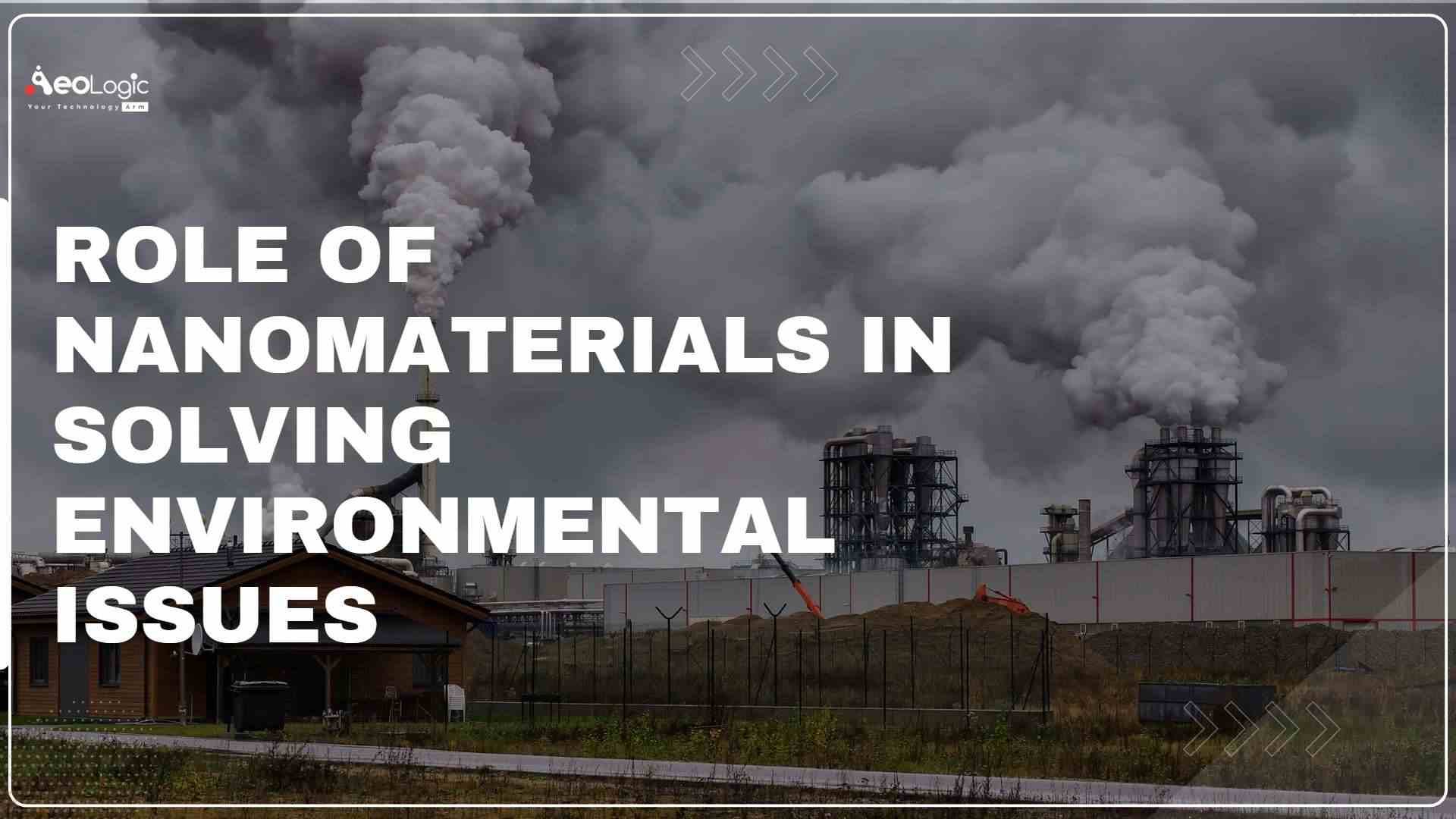Solving environmental issues is a daunting task that requires the use of many different tools and strategies. Some problems, like climate change, seem nearly impossible to solve. But with the help of nanomaterials, we may be able to make significant progress. Nanomaterials are materials that have been engineered at the nanoscale to have unique properties that can be exploited for a variety of applications. They are already being used in a number of industries, including energy, healthcare, and manufacturing. And now, they are being developed for use in environmental remediation and pollution control. In this blog post, we will explore the role of nanomaterials in solving environmental issues.
What are Nanomaterials?
Nanomaterials are materials that have been specifically designed to exploit certain physical or chemical properties that exist at the nanoscale level. In many cases, nanomaterials have much higher surface area to volume ratios than their “bulk” counterparts, which gives them unique and often highly advantageous properties.
Due to their size and surface area to volume ratio, nanomaterials often have very different physical and chemical properties than their “bulk” counterparts. For example, gold nanoparticles are much more reactive than bulk gold, and carbon nanotubes are much stronger and stiffer than bulk carbon.
The unique properties of nanomaterials are being exploited in a variety of ways to solve environmental issues. For example, nanotechnology is being used to develop more efficient solar cells, better batteries for electric vehicles, and catalysts for converting greenhouse gases into useful chemicals.
Also Read: The Importance of Information Technology in Business Today
Properties of Nanomaterials
Nanomaterials are materials that have been specifically designed to be extremely small – on the nanoscale. This gives them a range of unique properties that make them ideal for a wide range of applications, particularly in the field of environmental protection.
One of the most important properties of nanomaterials is their high surface area to volume ratio. This means that they have a large amount of exposed surface area for their size, which makes them extremely reactive. This can be exploited for environmental applications such as cleaning up oil spills or capturing atmospheric pollutants.
Another key property of nanomaterials is their optical and electrical properties. They can be tuned to absorb or reflect light over different wavelengths, which makes them perfect for use in solar energy technologies. They can also be used to create extremely efficient semiconductor devices, which could help to reduce energy consumption and greenhouse gas emissions from electronic devices.
Finally, nanomaterials are also incredibly strong and resilient, despite their small size. This makes them ideal for use in a variety of engineering applications, such as water filtration and purification systems.
Overall, nanomaterials have a huge potential to help solve some of the world’s most pressing environmental issues. Their unique properties make them perfectly suited for a wide range of applications, from cleaning up oil spills to reducing greenhouse gas emissions.
Also Read: Importance of Information Technology in Today’s World
Role of Nanomaterials in Solving Environmental Issues
Nanomaterials have the potential to play a significant role in solving some of the most pressing environmental issues facing the world today. In particular, nanomaterials can be used to develop more efficient and environmentally friendly energy sources, to clean up contaminated water and soil, and to create stronger and more durable building materials.
One of the most promising applications of nanomaterials is in the development of new energy sources. Nanotechnology can be used to create solar cells that are more efficient at converting sunlight into electricity, and to develop improved batteries that store more energy and can be recharged more quickly. Nanomaterials can also be used to create fuel cells that generate power without producing any pollution.
Nanotechnology can also be used to clean up contaminated water and soil. For example, nanoparticles can be used to remove heavy metals and other toxins from water supplies, and to break down organic pollutants in soil. In addition, nanomaterials can be used to create filters that remove pathogens from water, making it safe to drink.
Nanomaterials can be used to create stronger and more durable building materials. Nanoparticles can be added to concrete to make it stronger and more resistant to weathering, for example. In addition, nanoparticles can be used to create self-cleaning coatings for buildings that repel dirt and grime, reducing the need for cleaning chemicals.
Applications of Nanomaterials in Solving Environmental Issues
Nanomaterials offer unique solutions to environmental issues due to their small size and interesting properties. For example, nanomaterials can be used for water purification, oil spill cleanup, and solar energy conversion.
Water purification is a major environmental issue, and nanomaterials can be used to create more effective filters. In addition, nanomaterials can be used to remove heavy metals and other contaminants from water.
Oil spills are another major environmental issue, and nanomaterials can be used to help clean them up. For example, nanomaterials can be used to absorb oil from water and soil. In addition, nanomaterials can be used to break down oil into smaller molecules that are less harmful to the environment.
Solar energy is a renewable source of energy that can help reduce our reliance on fossil fuels. Nanomaterials can be used to create solar cells that are more efficient at converting sunlight into electrical energy. In addition, nanomaterials can be used in solar thermal collectors to convert sunlight into heat energy.
Also Read: Role of Information Technology in Business Environment
Toxicity of Nanomaterials
Nanomaterials offer a range of advantages for environmental applications, including their small size, high surface area-to-volume ratio, and chemical and physical properties that can be tuned to specific needs. However, these same characteristics also give nanomaterials the potential to be toxic. Although much is still unknown about the toxicity of nanomaterials, studies have shown that some types of nanomaterials can cause adverse effects in humans and animals.
One of the main concerns with nanomaterials is their small size. Because they are so small, they can easily enter cells and interact with biomolecules in ways that larger particles cannot. This can lead to cellular changes that may be harmful. In addition, because they are so small, nanomaterials can remain suspended in the air for long periods of time and be inhaled into the lungs. Studies have shown that this can cause inflammation and other adverse effects in the lungs.
Another concern with nanomaterials is their surface area-to-volume ratio. This ratio is higher for nanomaterials than for larger particles, meaning that there is a greater amount of exposed surface area for a given volume. This increased exposed surface area can make nanomaterials more reactive and increase their interactions with biological systems. These increased interactions can lead to toxicity.
It is important to note that not all nanomaterials are toxic. The toxicity of a given nanomaterial depends on its chemical composition, size, shape, and surface properties. In addition, the way in which a nanomaterial is used (for example, as an ingredient in a sunscreen or as part of a water filtration system) can affect its toxicity.
Currently, there is no easy way to predict the toxicity of a given nanomaterial. Researchers are working to develop methods for testing the toxicity of nanomaterials before they are used in consumer products or industrial applications.
Also Read: Technology Solutions for Healthcare
Conclusion
It is evident that nanomaterials have a big role to play in solving environmental issues. They can help us clean up pollution, create more efficient solar energy cells, and develop new ways to recycle materials. As we continue to research and develop new nanomaterials, it is likely that even more uses for them will be discovered, making them an important tool in our fight against climate change and other environmental problems.
If you are planning to integrate technology into your business, our experts can help you materialize your vision. Please get in touch with us.
Related Blogs:
- How AI/ML Can Change the Public Transportation Industry
- Transforming Business With Digital Technology in the Oil Palm Industry in India
- Importance of Digital Asset Management in the Retail Industry
- How AI is Transforming the Agriculture Industry
- 10 Ways to Use Artificial Intelligence to Improve Business Processes
- The Future of IoT Technology in Convenience Stores
- Building Manufacturing Resilience Through AI and ML

I’m Deepika Pandey, an SEO strategist and content writer with 6+ years of experience. I create SEO-friendly content that drives traffic and engages readers. I combine data insights with creativity to help businesses grow their online presence effectively.





